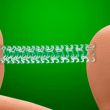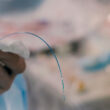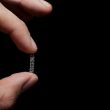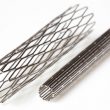Coronary revascularization with drug-eluting stents (DES) is very frequent, especially in acute coronary syndromes, but these metallic stents are permanent foreign bodies that activate the entire inflammatory system. Using bioresorbable stents (BRS) emerged as an alternative to this challenge. Although the initial results of the ABSORB study were not as expected (probably due to a...
OCT in STEMI Patients: Is It Safe to Prevent Stenting?
Percutaneous coronary intervention in patients with acute myocardial infarction (AMI) where the physiopathological mechanism is plaque erosion or non-atherosclerotic mechanisms (such as spontaneous coronary artery dissection) is not beneficial according to recent studies. The EROSION study (Effective Anti-Thrombotic Therapy Without Stenting: Intravascular Optical Coherence Tomography–Based Management in Plaque Erosion) has shown medical treatment with no...
CRUNCH Registry: An Option for Underexpanded Stents
Coronary calcification hinders both stent transfer and implantation, and has been associated with a higher risk of complications. Coronary perforation is the worst of them. In turn, these calcifications affect the preparation of coronary plaque, resulting in an underexpanded stent (US), which is a strong predictor of restenosis and early thrombosis. For the management of...
Should We Start Stenting with DES in Femoropopliteal Territory?
Percutaneous intervention of femoropopliteal lesions have been the standard strategy these past two decades. The development of drug eluting stents (DES) or drug eluting balloons (DEB) has improved patency rate compared against conventional balloon angioplasty. The ILLUMINA -a multicenter study- looked into the polymer free self-expanding stent NiTiDES, which showed at 1 year an 87%...
STEMI: Can We Omit Stenting?
The recommended treatment for ST elevation acute myocardial infarction (STEMI) is early PCI, typically stenting. However, stent implantation always involves the risk of intravascular complications, such as stent thrombosis or restenosis. Sometimes stable flow is restored to the target vessel after initial PCI and we can omit stenting when there is no angiographically significant residual...
Wire Jailing at Side Branch to Prevent Occlusion After Main Vessel Stenting: Should It Be the Standard of Care?
While the ideal treatment for coronary bifurcation is provisional stenting, this can be associated with side branch occlusion, which leads to severe adverse events. To prevent this complication, several treatments have been proposed. One of them is wire jailing at side branch before stent implantation in the main vessel. However, the actual benefit of this...
Drug Eluting Stents: Does Strut Size Matter?
The benefit of first-generation Drug-Eluting Stents (DES) over Bare Metal Stents (BMS) is largely known. Moreover, technological developments have led to reduced strut size, biodegradable polymers, and new scaffolds, which in turn have led to improved outcomes. These are known as ultrathin stents, and its struts measure between 70 and 100 microns, which contributes to...
Watch again Advanced Double Stenting Strategies for the Treatment of Coronary Bifurcations
Watch again “Advanced double stenting strategies for the treatment of coronary bifurcations” on our youtube channel. The event was part of the LATAM Bif-SOLACI Group course, entitled “How to achieve optimal and safe treatment of coronary bifurcations in 2021”. Check it out below! Advanced Double Stenting Strategies for the Treatment of Coronary Bifurcations
Provisional vs Dual Stenting in Left Main: An Endless Discussion?
True left main stem bifurcation patients have shown fewer adverse events with stepwise provisional stenting vs systematic dual stenting as first strategy, even though the difference was not significant. Usually, for any other vessel, the preferred technique is provisional stenting. However, when it comes to the left main, there is a randomized, dedicated, well designed...








